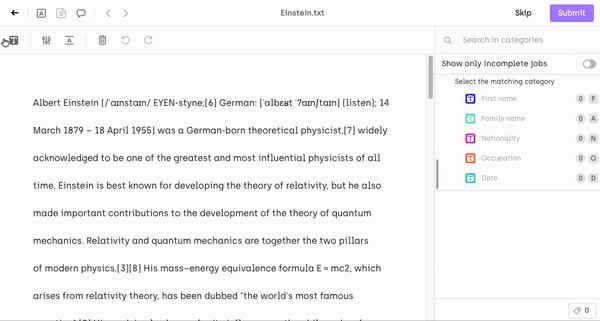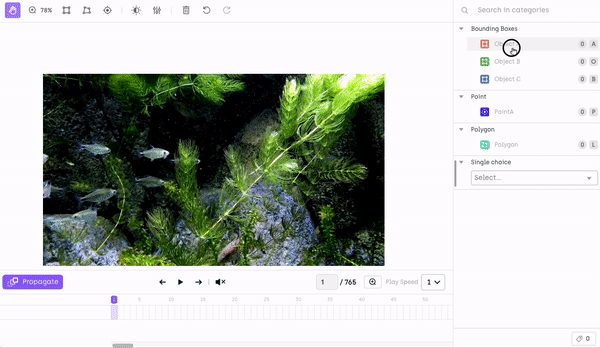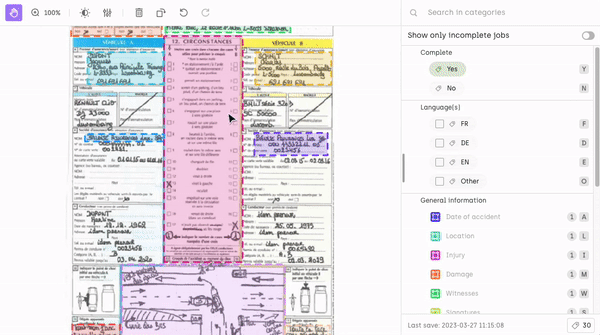Best practices for labeling
Tips for labeling quickly and effectively
The quickest and most effective way to label in Kili is to use the Thumbnail view available from the project Queue and add annotations to many assets at once.

Batch labeling from the Thumbnail view
- This labeling flow is only available in Image and Text projects and for classification jobs (both single-choice and multiple-choice).* For reasons related to managing project workflows, this feature is currently not available to regular labelers. But you can use it for reviews.* Annotating jobs with nested sub-jobs from the Thumbnail view is currently not supported.* In projects with more than one job type defined in ontology, only classification jobs are shown in the Thumbnail view.
For the remaining ontologies, the most effective way to label is to first select an annotation tool from the top bar and then complete all the related jobs directly from a floating menu that appears after selecting an object. This flow can be particularly useful if, for instance, you are dealing with a large number of categories, because it allows you to add annotations from different categories without having to search for them in the job viewer tab.

Labeling from the floating menu
This feature is available in all interfaces (Text, Video, Image, PDF) and all tools, except segmentation and pose estimation.
An alternative way to annotate is to first select an annotation job from the job viewer on the right side of the screen and then adding the annotation in the asset viewer. This slow is useful if you need to create several annotations of the same class, one by one.

Selecting the job and then labeling
Another useful technique to speed up labeling is using keyboard shortcuts. To access the list of available shortcuts, click the Shortcuts icon.
Here's an illustration of the difference in labeling speed:

Labeling with keyboard shortcuts
Making sure that all the required jobs are completed
In the jobs viewer, you can use the Show only incomplete jobs filter to list all the required annotation jobs that have not been completed yet.

Making sure that all the required jobs are completed
Additionally, if you click Submit on an asset with incomplete required jobs, this filter gets automatically switched on.
Be careful when clicking SkipIf you click Skip, the asset status changes to LABELED and the asset disappears from the "To do" list. Only admins and reviewers can add the asset back to the "To do" list. For details, refer to Asset lifecycle.
Updated about 2 months ago